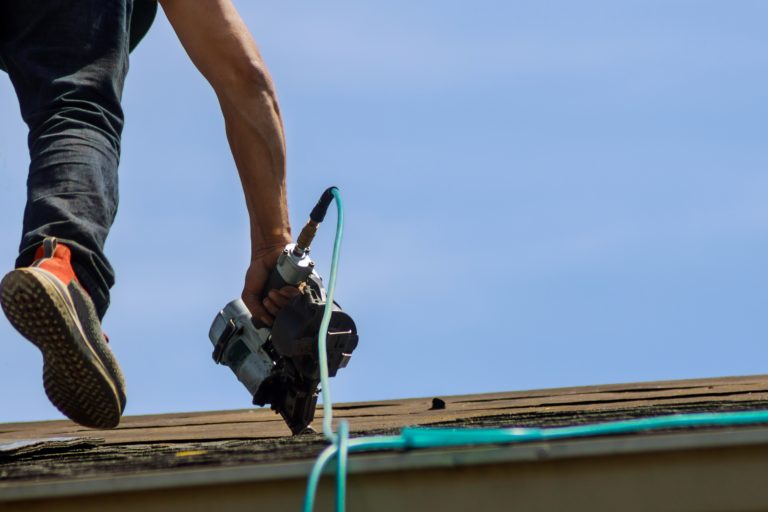
What’s the Cost of Reroofing vs Roof Replacement?
One of the most expensive costs associated with home ownership is roof installation. Whether you’re going for the more economical option of asphalt or springing
A little bad weather makes it easy enough to avoid roof damage. But, when it comes to hail or a hurricane-strength windstorm, your roof might not be up to the challenge.
That’s why it’s so important to take a look around in the aftermath of a storm. Instead of waiting for the worst to happen, determine the roof damage so you can fix it before it gets worse.
Whether you want to reach out to an experienced contractor or take on the inspection yourself, there are a few key things you’ll want to include on the checklist.
The first thing you’ll want to do following a storm is do a check around the perimeter of your home. This will help you assess the extent of the roof damage from hail or wind so you know what fast fixes are required.
Be sure to take notes and photos if you notice anything that looks suspect.
Certain things, like curling, torn or missing shingles will be pretty easy to spot and these roofing installation materials will need to be replaced as soon as possible!
It’s easy to scope out shingles to spot any potential water damage issues. But don’t forget about all those other important components of your roof!
Check the chimneys, skylights, and other protruding parts for roof damage from wind. Typically, these parts are covered with flashing and are sealed to avert water leaks into the seams.
If the flashing or seals seem damaged or compromised, you’ll need to act. Leaving the problem unattended can lead to water leaks.
Gutters that are loose or dented may not be moving water away from your home when a storm hits. So, do a double check and ensure they’re functioning as they should.
They should be free of debris and dents, and securely fastened to your roof. If there are any issues, a little handyperson repair might be required.
As you check your gutters, you’ll also want to look at vents and overhangs for signs of wear and tear. Any issues can mean roof damage repair is required.
The attic may be the spot in our home where we put stuff and forget about it. But, when a storm hits, it’s the first place you should look for interior signs of roof damage.
Your roof may not have incurred any significant or marked damage, but your attic will tell the real story.
Check for any water leaks or a musty smell that may indicate water damage. You’ll also want to look at your ceilings and light fixtures to ensure nothing’s amiss.
It’s important to investigate your home and roof after a storm as soon as possible. And, outside of leaks, one of the main reasons is for your roof damage insurance claim
After all, if you sit on roof problems, what you’re entitled to will decrease with time!
Your notes and photos will come in handy when it’s time to contact your insurance provider. Be sure you can easily outline the damage for them so filing a homeowners insurance claim for roof damage is a little easier.
An experienced home handyperson might feel comfortable taking caring of their own post-storm inspection. However, if you’re not sure how to identify roof damage, it’s a good idea to contact the professionals.
When looking for the right contractor, choose someone who has been in business a while and knows the ropes. They should be licensed, insured and be able to offer a warranty for the materials they use and the work they do.
Check out reviews and talk to friends and family to determine which contractor is right for you.
Getting roof work during COVID can be more complicated, but it’s still more than do-able with the right contractor.
Dealing with your roof after a big storm may seem like a bit of a pain. But inspecting any roof damage that might have been done means more assurance down the road. By checking your attic, shingles and chimney, you’ll be well on your way to a more secure roof.
Sometimes all it takes is a little extra checking to make the cold months of winter a little easier!
If you’re looking for a little help with your post-storm inspection, reach out to the experts at Dr. Roof today at 1-818-514-1769 so they can get started.